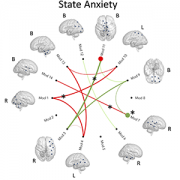Improving health care for immigrant children

Immigrant children may face multiple and complex challenges that underlie seemingly routine health concerns that bring them to clinic, says Olanrewaju Falusi, M.D., F.A.A.P.
Over the next 40 years, children of immigrant families will grow to represent one-third of residents of the United States. To help more pediatricians address the interplay between immigration and child health, a Children’s National Health System clinician helped to compile a set of case studies, resources and recommendations.
Olanrewaju Falusi, M.D., F.A.A.P., and a colleague explained these issues during their joint presentation, “Advancing health care quality for immigrant children,” during the 2017 American Academy of Pediatrics (AAP) national conference. The aim of the presentation and of their work is to help pediatricians understand the impact of immigration-related issues and unresolved immigration status on children’s mental health and well-being.
“As pediatricians, we are tasked with caring for the whole child. And, for immigrant children, there may be multiple and complex challenges that underlie seemingly routine health concerns that bring them to clinic,” says Dr. Falusi, associate medical director of municipal and regional affairs at the Child Health Advocacy Institute at Children’s National. “By more fully understanding immigrant children’s unique needs, we can help bolster their resiliency.”
Though refugees may be resettled anywhere, in fiscal year 2016 almost 7,400 unaccompanied children were released to sponsors in California, the highest of the states. In five states (California, Illinois, Massachusetts, New York, Washington state and the District of Columbia) immigration status has no bearing on a child accessing public health. Undocumented immigrants, however, are not eligible for subsidies that lower the price of health insurance. Nor can they access such federal entitlements as SNAP (formerly known as Food Stamps). Even something as basic as having a ride to a doctor’s appointment can be complicated since only one dozen states offer access to driver’s licenses regardless of immigration status.
Using the case of a child named “Pedro,” who feared deportation, Dr. Falusi and a colleague explained how immigration status impacts access to clinical care, discussed DACA, his parent’s undocumented status and explored how clinicians could support Pedro and his family.
In another scenario, Esperanza comes to clinic with her 3- and 6-year-old sons, who are afraid to leave her side. Since the family fled Honduras and settled in the United States, Esperanza worries about her older daughter’s behavioral problems in school.
“These are challenging mental health concerns to unravel because some families may be reluctant to reopen past traumas,” Dr. Falusi says. “During their flight from their home country, children can be victims of or witnesses to violence, including rape. They may have seen another person drown during a water crossing or die in arid deserts.”
Clinicians can begin such conversations simply by trying to understand why Esperanza and her children came to the United States in order to consider the range of options for appropriate clinical care, as well as possible legal services. Bridging from that more neutral starting point, the health care team could delve into her family’s experiences in Honduras. If Esperanza fears returning to Honduras, asylum may be an option if her fears are well-founded and the persecution is due to race, religion, nationality, political opinion or membership in a particular social group, Dr. Falusi says. Additional options may include T visas and U visas for victims of certain crimes.
“We are all aware how little time there is during the clinical encounter to have such detailed conversations. Ideally, the clinician would serve as a trusted intermediary, helping the family connect with community resources in order to best address the unique social needs of immigrant children,” Dr. Falusi says.











